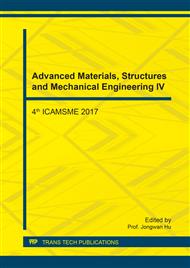p.107
p.112
p.117
p.123
p.131
p.135
p.140
p.147
p.153
Analysis on the Curative Effect of Improved Radial Artery and Cephalic Vein Anastomosis in the Fistulation for the Hemodialysis in Patients
Abstract:
To investigate the application of improved radial arteryand cephalic vein anastomosis in the fistulation for the hemodialysis in patients, 80 cases of patients with chronic renal failure were randomly divided into two groups, a control group and an improved group. The procedure for the wrist radial arteryand cephalic vein anastomosis was improved, in which in a way of continuously everted full-thickness suture, the distal end of radial artery and the proximal end of cephalic vein were anastomosed. The patients were examined by the different methods before the surgery to evaluate the patients’conditions. Patients in the improved group underwent the anastomosis of the wrist radial artery and cephalic vein in a way of continuously everted full-thickness suture, and those in the control group underwent the anastomosis in the conventional way. The improved procedure showed some advantages, such as reduced anastomotic blood leakage, good alignment of the arteryand veinwalls, shortened vascular suture time, and less knot of sutures at the anastomotic junction. The improved procedure should be appropriated for the patients whose Allen's test is negative and cephalic vein is good in the blood flow and filling. However, the weak blood reflux of the distal end of radial artery should bethe contraindication for the improved procedure.
Info:
Periodical:
Pages:
131-134
Citation:
Online since:
November 2017
Authors:
Keywords:
Price:
Сopyright:
© 2017 Trans Tech Publications Ltd. All Rights Reserved
Share:
Citation:


